#garigal county
Explore tagged Tumblr posts
Text



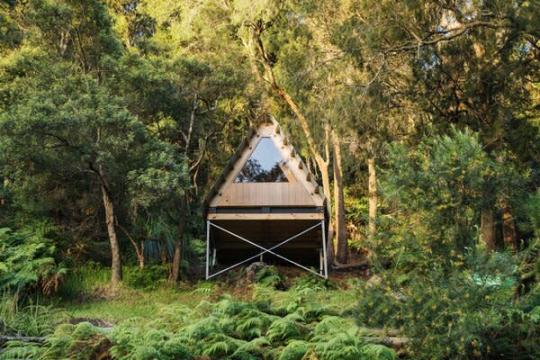
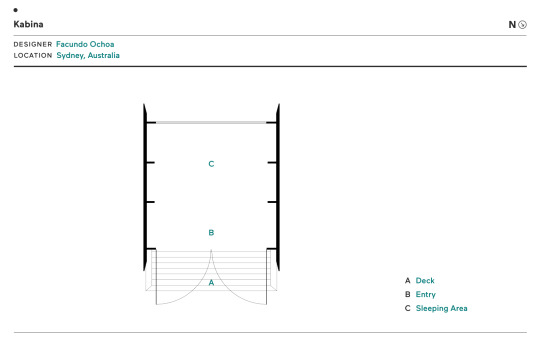
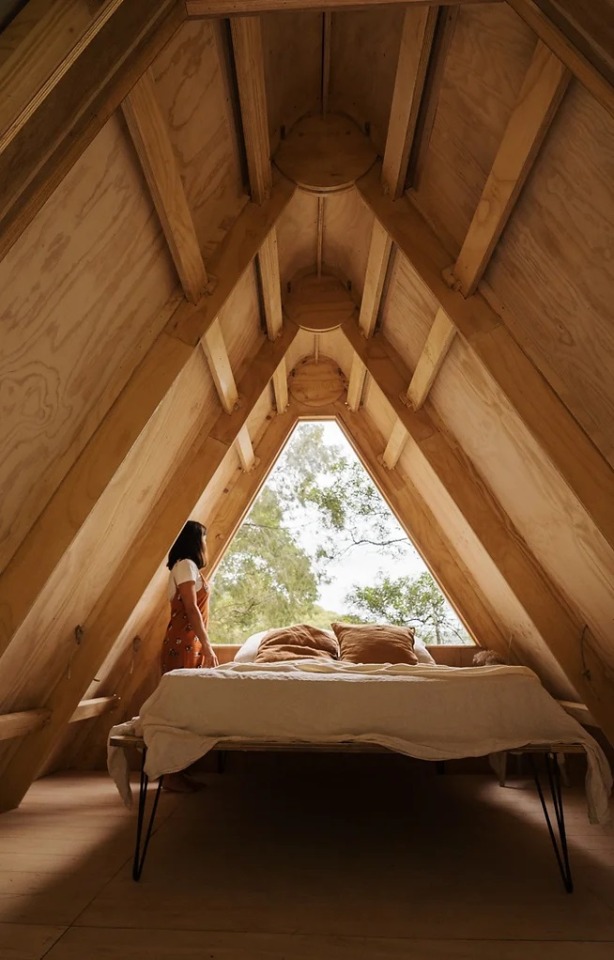
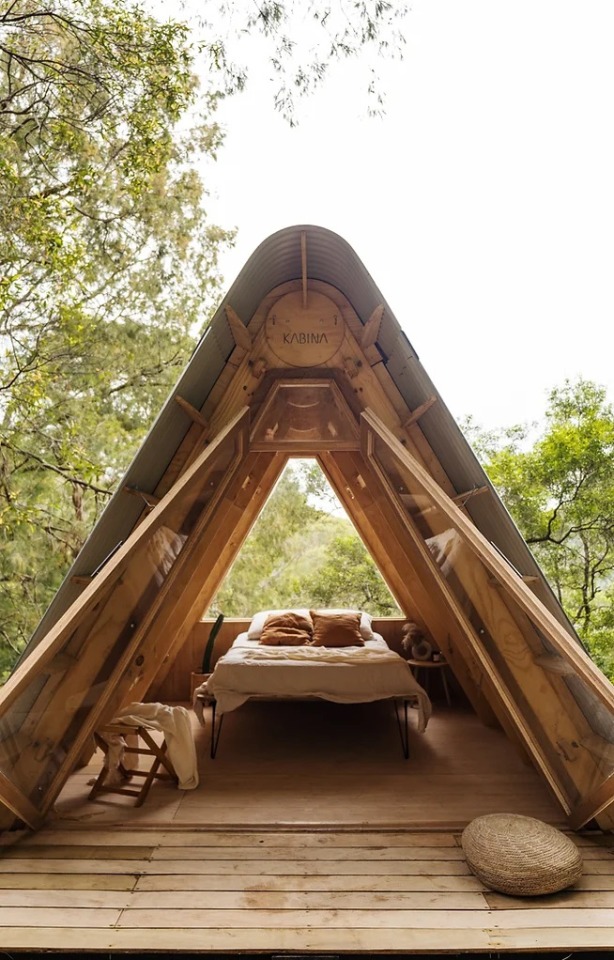
Kabina, Garigal country, Australia,
KABINA utilises innovative Interlocking joinery techniques making screws, fasteners and nails redundant. This allows to make products that are stronger, long-lasting, easy to assemble and disassemble and relocate back into the circular economy.
Courtesy: Facundo Ochoa
#art#design#architecture#minimal#nature#retreat#cabin#pre-fab#australia#kabina#garigal county#facundo ochoa#bushland#millwork#carpentry#eco-friendly#plywood#glamping#camping#nomad#circular economy
307 notes
·
View notes
Photo
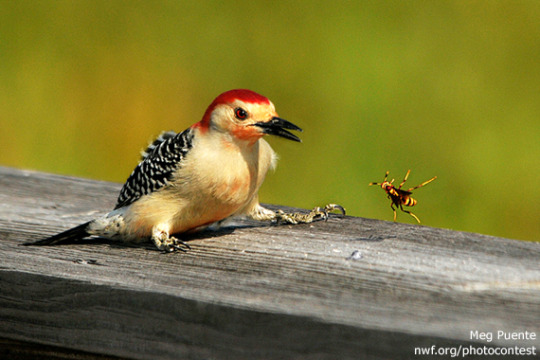
From National Wildlife Federation Photo of the Week; March 13, 2017:
Florida Wildlife
National Wildlife's 46th annual Photo Contest is now open! Check out some of our favorite photos from past National Wildlife photo contests. Each week we'll celebrate nature and wildlife from a different state. This week we're featuring Florida nature and wildlife!
Photo Above: Wildlife photographer Meg Puente photographed this "little male Red-bellied Woodpecker (Melanerpes carolinus) mesmerized by the antics of a Paper Wasp (Polistes sp.)" in Palm Beach County, Florida's Green Cay Wetlands. The Florida resident used a Nikon D300S DSLR camera.
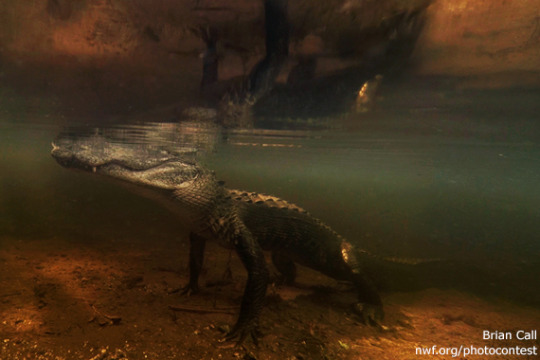
Conservation photographer Brian Call made this underwater image of an American Alligator (Alligator mississippiensis) in Florida's Big Cypress National Preserve using a GoPro Hero3 attached to an extendable underwater monopod. Read National Wildlife's Visiting the Heart of Alligator Country.

Wildlife photographer Siddhardha Garige made this portrait of a Cattle Egret (Bubulcus ibis) in St. Augustine, Florida using a Canon EOS 7D with a 100-400mm f/4-5.6 lens. The Florida resident writes, "The fall foliage in evening light provided a fantastic background for this egret in breeding plumage." Do you know how to spot the differences between a Heron, Egret or Crane?
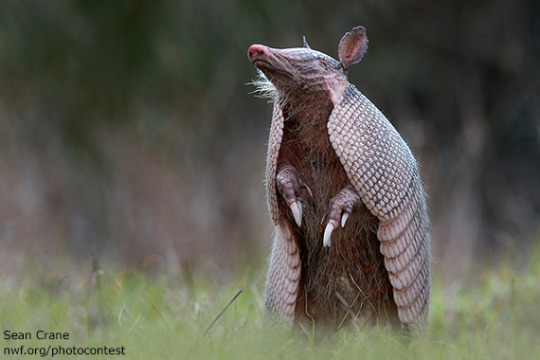
Wildlife and nature photographer Sean Crane writes, "For an animal that is practically blind, Nine-banded Armadillos (Dasypus novemcinctus) can be difficult to photograph. They very rarely pick their faces up from the ground, and when they do it's because they smell a threat and then quickly run away. I knew that if I positioned myself upwind the armadillo would lift up for a second or two, catch my scent and run. I had to get on the ground quick, focus and shoot. I saw several armadillos on this particular day in Florida's Merritt Island National Wildlife Refuge, and used this method of shooting each time. This image was my favorite result." The New York resident used a Nikon D300 with a 200-400mm lens. Read the NWF Blog Falling in Love with the Nine-Banded Armadillo.

Florida resident Jessie Dickson photographed this young Florida Red-bellied Cooter (Pseudemys nelsoni) in Viera, Florida's Ritch Grissom Memorial Wetlands using a Nikon D80 with a 70-300mm lens.

Photographer Kathy Urbach writes about capturing this image of an American Red Fox (Vulpes vulpes fulvus) kit in Central Florida, "Arriving a dawn, we set up close enough to shoot with long lens and see the den opening and yet be far enough away not to disturb. On this particular day we had lots of activity. This kit wandered to the edge of the water for a drink and looked right at us ... such a treat to be so close to nature." The Florida resident used a Canon EOS 1D Mark III with a 400mm lens and a 1.4x extender. Read National Wildlife's When the Red Fox Comes to Town.
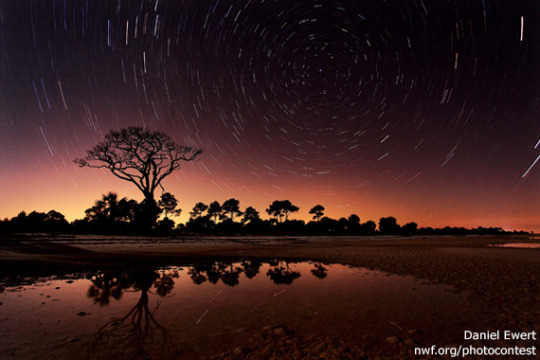
Landscape photographer Daniel Ewert writes, "I walked into the bay at St. Joseph Peninsula State Park around midnight as the tide was going out. I set up my camera on a tripod facing the peninsula and took three 8-minute exposures in immediate succession to capture 24 minutes of star trails. This was one of the first times I was able to shoot a scene with star trails reflecting in the water." The Florida resident used a Canon EOS 5D Mark II with a 17-40mm f/4 lens. Get some tips on taking better nighttime photos.

Photographer Valerie Begley made this Florida photograph of "a family of Sandhill Cranes (Grus canadensis) searching for food while an American Bison (Bison bison) snoozes in the background" using a Canon EOS 50D with a 400mm lens.
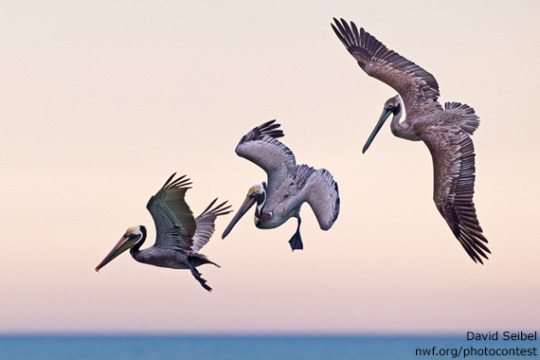
Nature photographer David Seibel writes, "I noticed a number of Brown Pelicans (Pelecanus occidentalis) actively fishing along a beautiful stretch of beach on Florida's Gulf Coast and decided to try to capture them in flight during their dives. This trio gave me a terrific show shortly before sunset." The Kansas resident used a Canon EOS 1D Mark IV with a 500mm f/4 lens.

Underwater photographer David Fleetham captured this image of an "endangered Florida Manatee (Trichechus manatus latirostris) at Three Sisters Spring in Crystal River National Wildlife Refuge on an unusually cold day in January. The manatees seek out the springs for warm water." The Hawaii resident used a Canon EOS 5D Mark II with a 15mm fisheye lens in Ikelite underwater housing and dual strobes. Read Ranger Rick's Manatees.

Nature photographer Nancy Elwood writes, "I had my first opportunity to photograph an Eastern Great Horned Owl (Bubo virginianus virginianus) family from four weeks old to branching, in a nest that had been used for many years by this same pair of owls. In the beginning the adult female would spend a lot of time with the chicks, but as time went on she would leave them during the day. But she and the adult male were never far away, always staying close by to watch over their family." The Florida resident used a Nikon D300 with a 500mm f/4 lens.

Nature photographer Scott Helfrich made this image of a Gopher Tortoise (Gopherus polyphemus) that "came walking down the clay road" in Clermont, Florida using a Nikon D200 with a 300mm lens. Read about The Subterranean World of Gopher Tortoises.
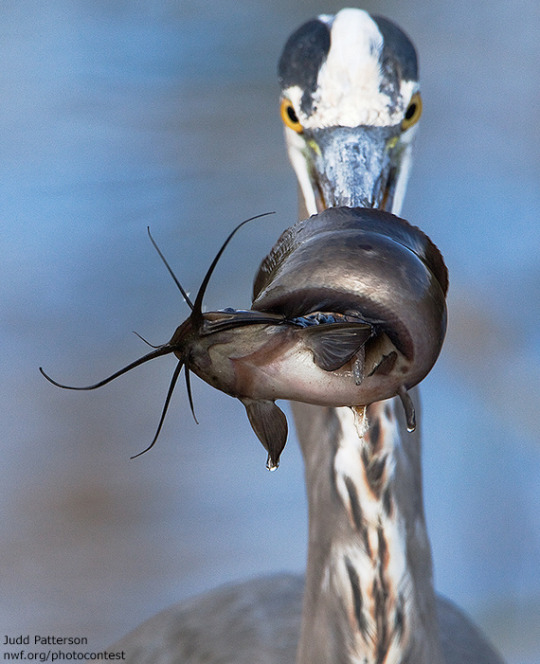
Nature photographer Judd Patterson caught the moment a Great Blue Heron (Ardea herodias) grabbed a meal in Everglades National Park using a Canon 5D Mark II with a 500mm f/4 lens on a tripod. The Florida resident writes, "This heron was carefully stalking fish along the water's edge when, with a quick strike, the fish was caught and the heron swung the exotic Walking Catfish (Clarias batrachus) around for my camera to see before devouring it in one quick gulp."
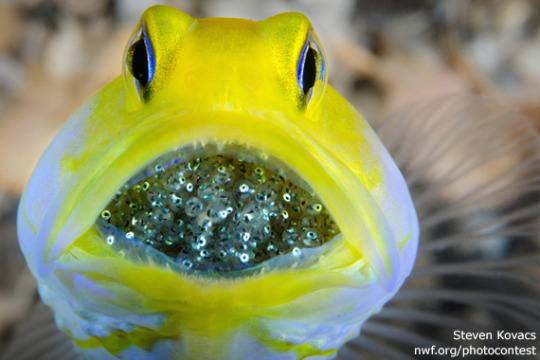
Underwater photographer Steven Kovacs photographed this Yellowhead Jawfish (Opistognathus aurifrons) in Florida's Lake Worth Lagoon in Rivera Beach. He explains, "Jawfish are a species of fish where the male carries its eggs in its mouth until ready to hatch." The Florida resident used a Nikon D7000 with a 105mm lens in underwater housing with dual strobes.
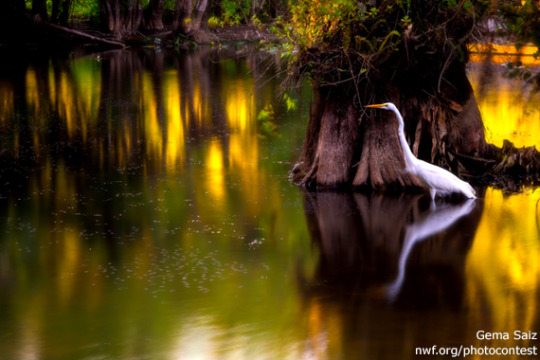
Photographer Gema Saiz took this photo in Big Cypress National Preserve where this Great Egret (Ardea alba) "seemed to be posing for me," she writes. "It held its pose for an extended time allowing me to slow the shutter and capture the silky water." The Florida resident used a Canon EOS 5D Mark II with a 24-105mm f/4 lens.

Florida resident Elaine Kruer photographed this Robber Fly in her backyard habitat using a Canon EOS 60D with a 100mm f/4 macro lens. She writes about these beneficial bugs, "These mustache toting desperadoes are fast food connoisseurs, adept body snatchers, and accomplished alchemists. From their perch they watch for an intruder, intercept it in mid-flight, and inject it with paralyzing enzymes." Learn how to Create a Haven for Beneficial Bugs in your garden.
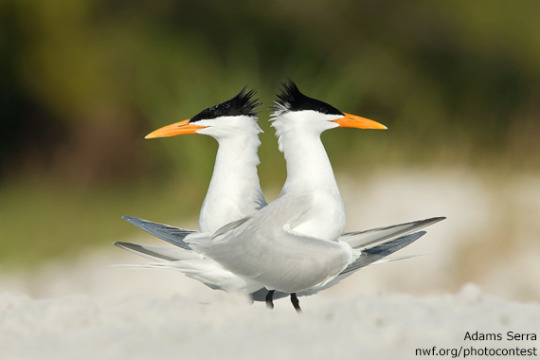
Bird photographer Adams Serra made this image of "Royal Terns (Thalasseus maximus) doing their mating dance" in Fort De Soto, Florida, capturing this perfectly symmetric moment using a Canon EOS Mark IV with a 600mm lens and 1.4x teleconverter.
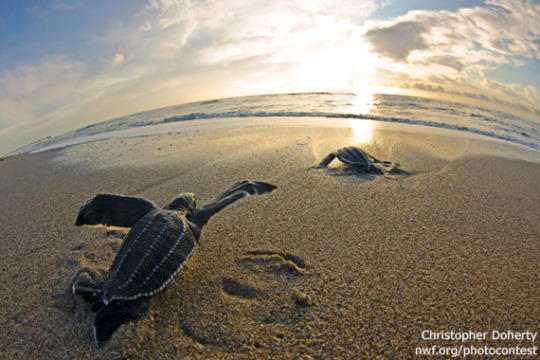
Underwater photographer Christopher Doherty caught this 'mid-stride' moment as these two Leatherback Sea Turtle (Dermochelys coriacea) hatchlings made their way to the ocean at sunrise in Juno Beach, Florida using a Nikon D7000 with a 10-17mm fisheye lens. Read National Wildlife's The Secret to Saving Sea Turtles.

Nature photographer Bill Long made this image of lightning striking over St. Petersburg, Florida, using a Nikon D4 with a 24-70mm f/2.8 lens.

Steve Ball made this image of a Florida Panther (Puma concolor coryi) cooling off in a pond on a hot day in South Florida. The Florida resident used a Canon 50D camera to capture the moment. Read National Wildlife's Cat on a Collision Course.
More from the National Wildlife Federation:
National Wildlife: Florida, Paradise Unwound
NWF Affiliate: Florida Wildlife Federation
NWF Blogs about Florida and the Florida Wildlife Federation
National Wildlife Federation's South Central Regional Center
Nature's Witnesses: Powerful images of wilderness can inspire conservation.
Nature and Wildlife Photography Tips Center
8 notes
·
View notes